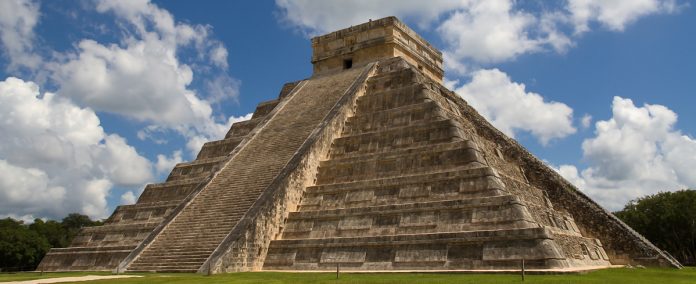Interaction Team
Once, in the lush jungles and sprawling landscapes of what is now known as southeastern Mexico, all of Guatemala and Belize, and parts of Honduras and El Salvador, there thrived an extraordinary civilization that was unlike any other in the world. This was the realm of the Maya, a people whose stories are woven with the threads of innovation, mystery, and an enduring spirit that has captivated the imagination of many.
The dawn of the Maya
The saga of the Maya begins in the deep mists of time, around 2000 BCE, in an era when they laid the foundations of what was to become a dazzling civilization. These were the days of small beginnings, with maize cultivation that painted the landscape green and villages where the future pillars of society took shape. The Maya, even in these early days, showed signs of the greatness that was to come.
The classic period: The golden age
As centuries passed, the Maya entered what can only be described as their golden age, a period that stretched from 250 CE to 900 CE. It was a time of flourishing cities that were marvels of architecture and hubs of human activity. Imagine places like Tikal and Palenque, where towering temples reached for the skies, and palaces sprawled in elegance, each stone telling a story of power, devotion, and the pursuit of knowledge.
The rulers of these cities were more than mere mortals; they were seen as mediators with the gods, their authority unquestioned, and their might absolute. They presided over a world where the heavens were charged with precision, where each star and planet was tracked with an understanding so profound it could predict eclipses decades in advance.
A tapestry of knowledge
Among the Maya’s most enduring legacies is their hieroglyphic script, a complex system of writing that recorded their history, beliefs, and scientific achievements. They were mathematicians, their inventions included the concept of zero, which allowed them to explore the mysteries of the universe with unparalleled accuracy. Their calendars were so sophisticated that they could align their ceremonial life with the cosmos itself, a feat that speaks to their deep connection to the world around them.
The Maya were also master builders, their cities a testament to their understanding of both engineering and aesthetics. Each structure, from the grandest pyramid to the most modest home, was a piece of a larger cosmic puzzle, designed to harmonize with the stars above and the earth below.
Gods and the cosmos: The spiritual world of the Maya
The Maya world was alive with the presence of the divine. Gods of rain, corn, and the underworld walked hand in hand with the people, guiding them through the cycles of life, death, and rebirth. The Maya believed in the power of sacrifice, in the shedding of blood to nourish the gods and maintain the balance of the universe. This belief permeated their existence, from the grandest ceremonies to the most personal rituals.
The twilight of the Maya world
But no civilization can last forever. Around 900 CE, the Maya world began to change. Cities that had stood for centuries were abandoned, and the jungles slowly claimed them back. Scholars debate the causes drought, war, societal collapse but the result was the same: a world transformed.
Yet, the Maya did not disappear. When the Spanish conquistadors arrived, they found a people whose culture was vibrant, whose cities though smaller and fewer were still places of learning and worship.
The legacy lives on
Today, the descendants of the Maya continue to live in Central America, guardians of a heritage that is both ancient and ever-new. The ruins of their ancestors’ cities are now places of pilgrimage, not just for tourists, but for those who seek to understand the depth of human ingenuity and resilience.
The story of the Maya is not just a tale of what was but a reminder of what can be. In their achievements and their challenges, we see reflections of our own world, a reminder that civilizations rise and fall, but the quest for knowledge, the reverence for the divine, and the spirit of innovation endure. This is the legacy of the Maya, written not just in stone, but in the heart of humanity itself.







